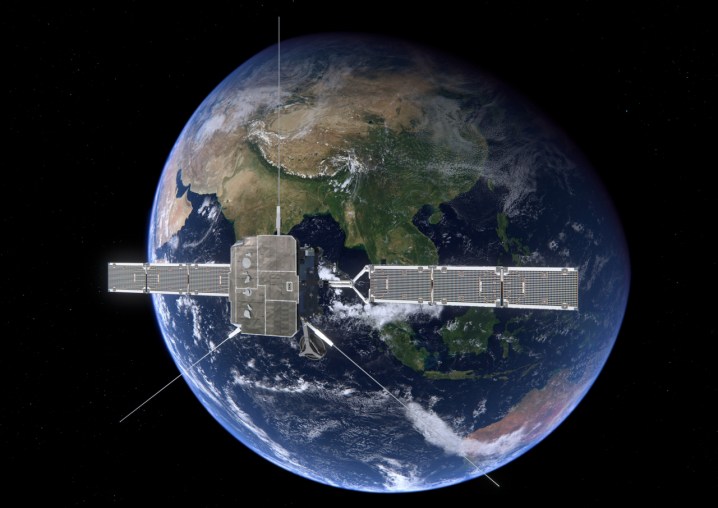
The European Space Agency’s Solar Orbiter has sent back its first measurements from space, confirming that its instruments for measuring electromagnetic fields are working correctly.
The mission was launched last week, late at night on February 9. The Orbiter is on its way to the sun, where it will take groundbreaking images of the sun’s poles thanks to a highly inclined orbit that will allow it to view never-before-seen areas of our star.
The Orbiter has 10 scientific instruments on board, including four that measure the environment around the craft, in particular the electromagnetic properties of solar wind. The magnetometer instrument is the first to send back data, after having its two sensors turned on 21 hours following launch. The instrument has been recording data since then, confirming that it is working well.
“The data we received shows how the magnetic field decreases from the vicinity of the spacecraft to where the instruments are actually deployed,” Tim Horbury of Imperial College London, principal investigator for the magnetometer instrument, said in a statement. “This is an independent confirmation that the boom actually deployed and that the instruments will, indeed, provide accurate scientific measurements in the future.”
The boom is a titanium and carbon-fiber pole that holds and deploys four instruments, all of which need to be kept far from the main spacecraft due to their sensitivity to electromagnetic disturbances. It was deployed over a 30-minute period on February 12.
“Measuring before, during, and after the boom deployment helps us to identify and characterize signals that are not linked to the solar wind, such as perturbations coming from the spacecraft platform and other instruments,” said Matthieu Kretzschmar of Laboratoire de Physique et Chimie de l’Environnement et de l’Espace in Orleans, France. He’s lead co-investigator behind another sensor located on the boom.
“The spacecraft underwent extensive testing on ground to measure its magnetic properties in a special simulation facility, but we couldn’t fully test this aspect until now, in space, because the test equipment usually prevents us from reaching the needed very low level of magnetic field fluctuations.”
With the instrument deployed and working, the next step is for the engineers to perform calibrations, and then the collection of scientific data can begin.
Editors' Recommendations
- Axiom-1 to depart from ISS today after extra days in space
- Solar Orbiter captures a dramatic solar prominence
- Solar Orbiter to perform its riskiest flyby before heading to the sun
- Launch of SpaceX Inspiration4 mission pushed back by a day
- Watch the key moments from Virgin Orbit’s successful rocket launch




